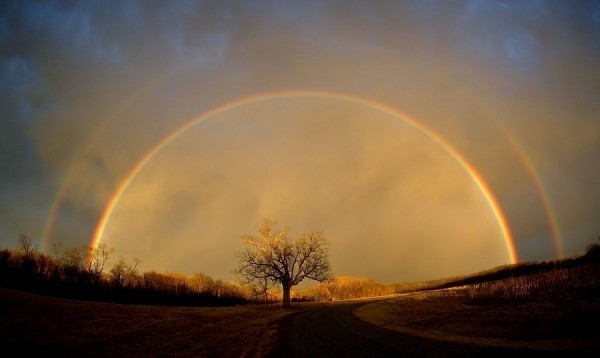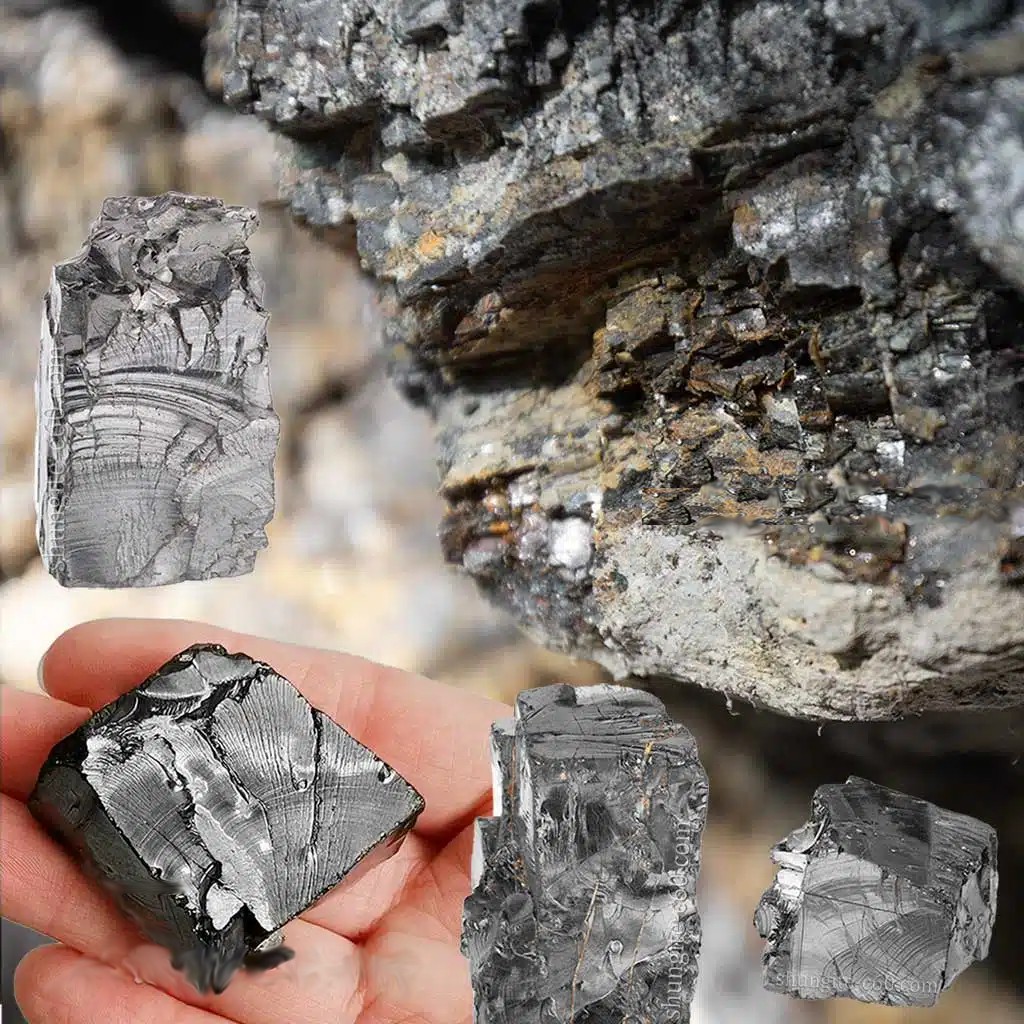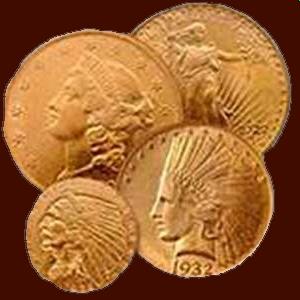




Looking After Your Finds - Identification - Rocks and Minerals

The Rarest Minerals on Earth
Powered By Sispro1

Fibulae1
Copyright All Rights Reserved by Nigel G Wilcox E-Mail: ngwilcox100@gmail.com
Designed by Nigel G Wilcox
Complimentary Topics
The Paragon Of Metal Detecting
& Archaeology
& Archaeology
Pages
Rarest Minerals on Earth
Main Coin Menu
Roman Coins
Menu
Menu
Member NCMD
R&M Index
Rarest Minerals on Earth: Russian Shungite
Shungite, a striking black and silver color stone found in Russia, is indeed one of the rarest minerals on Earth. Renowned for its unique properties, it is believed to have purifying and protective qualities. Scarcity of the Russian stone adds to its mystique, making it highly sought after by collectors and enthusiasts worldwide. With its ancient origins and remarkable properties, this rare stone continues to captivate both scientific minds and those drawn to its enigmatic allure.
This rare Russian silvery type 1 and truly beautiful mineral deserves special attention because its mining deposit is completely exhausted. Currently, there are only small reserves in the form of extremely small veins around the mine. This mine is located in only one region on the planet. This location is defined as the Republic of Karelia, Russia.
In addition, it is the only mineral that has a unique chemical composition and contains an allotropic form of carbon.
Rarest minerals on earth: Conclusion
In conclusion, the Earth s crust hides a wealth of rare and precious minerals and gemstones, each with its own story and allure. While these minerals are often prized for their beauty and value, they also serve as a reminder of the natural wonders that continue to captivate and inspire us. Whether treasured for their dazzling colors, unique properties, or historical significance, these rare minerals are truly nature s hidden treasures, waiting to be discovered and cherished by those who appreciate their extraordinary rarity.
What is shungite: Scientific definition
Shungite is an extremely rare, naturally occurring, non-crystalline mineraloid with a unique molecular structure. The main element is fullerene substance, an amorphous form of Carbon.
The main difference of this Russian rock is the high content of amorphous Carbon (fullerene) in the chemical composition. In addition, the features of shungite are also characterized by its unusual properties and unique chemical structure.
Most types of rocks are present in all corners of our planet. On the contrary, mountain deposits of shungite have been discovered in only one region: the Republic of Karelia in northern Russia. According to various scientific estimates, it has a colossal age of several billion years. This indicates a complex interaction of biological and geological processes during its formation, potentially related to the decomposition of organic substances such as seaweed.
Main types depending on carbon content
In the scientific community, shungite is divided into three categories. Each category has its colour and amount of carbon content. The higher the percentage of Carbon, the more gray and shiny the rock s surface will be.
For example, black stones are type 3 and have 32% carbon. The second type has about 60% carbon, a gray colour, and a matte, non-reflective surface.
The rarest and most beautiful type 1, also called elite, has the most significant amount of Carbon, up to 98%. As a result, type 1 has a curvy, shiny silver colour that reflects light well. However, it is worth noting that if there is no bright lighting, the surface of this mineral will not shine but will have a Gray colour.
The physical properties of shungite stone also vary depending on the presence of other minerals in its chemical composition. Below is a complete table of all the minerals and chemical elements that make up this rare rock.
It is also important to note that the presence of fullerenes in this rock gives it unique physical and chemical properties inaccessible to other minerals or rocks.
Main types depending on carbon content
In the scientific community, shungite is divided into three categories. Each category has its colour and amount of carbon content. The higher the percentage of Carbon, the more gray and shiny the rock s surface will be.
For example, black stones are type 3 and have 32% carbon. The second type has about 60% carbon, a gray colour, and a matte, non-reflective surface.
The rarest and most beautiful type 1, also called elite, has the most significant amount of Carbon, up to 98%. As a result, type 1 has a curvy, shiny silver colour that reflects light well. However, it is worth noting that if there is no bright lighting, the surface of this mineral will not shine but will have a gray colour.
The physical properties of shungite stone also vary depending on the presence of other minerals in its chemical composition. Below is a complete table of all the minerals and chemical elements that make up this rare rock.
It is also important to note that the presence of fullerenes in this rock gives it unique physical and chemical properties inaccessible to other minerals or rocks.
The main features of Shungite rocks Fullerenes
The presence of Fullerenes in the chemical composition of shungite stone rightfully gives it the rarest and most unusual mineral in the world. The fact is that fullerenes (allotropic molecular forms of Carbon) have been found only in the chemical composition of this rock.
Key Features
This rare Russian rock has beneficial and rare properties that will be useful not only for humans but also for the environment. Here is a short list of the leading and most valuable properties:
The ability to purify and disinfect water. Similar sorption and antibacterial properties are not found in other rocks. The most effective in this area is the black shungite, which is the third type.
Absorption of high-frequency electromagnetic waves, the sources of which are various household appliances. The definition of these harmful waves can often be found in the abbreviation EMF. Many people are skeptical about this ability, but this fact has been scientifically proven. In addition, many studies, experiments, and tests in open sources confirm this. Type 3 has also become the object of these scientific studies.
The ability to mineralize and saturate the water with fullerenes. This complex molecular form is recognized as one of the most potent natural antioxidants. Type 1 (elite) shungite stone is recognized as the most effective in this area. It has the highest percentage of Carbon, approximately 98%.
At this stage, you have received the most basic, brief ideas and got acquainted with shungite. We also learned about its main features. But it s too early to stop. Next, we invite you to get to know this rock as closely as possible.
Where is shungite found?
Deep within the Karelia region of Russia lies the birthplace of shungite, a mineral that has mystified scientists and geologists and captivated enthusiasts worldwide. This ancient rock formation has an intriguing origin story, contributing to its rarity and allure.
Shungite stone was first discovered in the small village of Shunga, from which it derived its name. Deposits of this extraordinary mineral are primarily found in the Zazhoginsky and Shunginsky areas, nestled amidst the vast wilderness of the Karelian landscape.
Nature crafted the rarest rock deposit in the world here amidst the pristine forests and tranquil lakes. This scarce rock is found only in one place on Earth: the North-Western region of Russia, the Republic of Karelia.
The Russian black stone is a mineral whose main chemical element is Carbon. Most noteworthy, only this form of Carbon contains natural Fullerenes. This mineral has unique and unusual properties no longer inherent in any mineral on Earth. According to scientific research, it was formed over two billion years ago.
This rare Russian silvery type 1 and truly beautiful mineral deserves special attention because its mining deposit is completely exhausted. Currently, there are only small reserves in the form of extremely small veins around the mine. This mine is located in only one region on the planet. This location is defined as the Republic of Karelia, Russia.
In addition, it is the only mineral that has a unique chemical composition and contains an allotropic form of carbon.
Rarest minerals on earth: Conclusion
In conclusion, the Earth s crust hides a wealth of rare and precious minerals and gemstones, each with its own story and allure. While these minerals are often prized for their beauty and value, they also serve as a reminder of the natural wonders that continue to captivate and inspire us. Whether treasured for their dazzling colors, unique properties, or historical significance, these rare minerals are truly nature s hidden treasures, waiting to be discovered and cherished by those who appreciate their extraordinary rarity.
What is shungite: Scientific definition
Shungite is an extremely rare, naturally occurring, non-crystalline mineraloid with a unique molecular structure. The main element is fullerene substance, an amorphous form of Carbon.
The main difference of this Russian rock is the high content of amorphous Carbon (fullerene) in the chemical composition. In addition, the features of shungite are also characterized by its unusual properties and unique chemical structure.
Most types of rocks are present in all corners of our planet. On the contrary, mountain deposits of shungite have been discovered in only one region: the Republic of Karelia in northern Russia. According to various scientific estimates, it has a colossal age of several billion years. This indicates a complex interaction of biological and geological processes during its formation, potentially related to the decomposition of organic substances such as seaweed.
Main types depending on carbon content
In the scientific community, shungite is divided into three categories. Each category has its colour and amount of carbon content. The higher the percentage of Carbon, the more gray and shiny the rock s surface will be.
For example, black stones are type 3 and have 32% carbon. The second type has about 60% carbon, a gray colour, and a matte, non-reflective surface.
The rarest and most beautiful type 1, also called elite, has the most significant amount of Carbon, up to 98%. As a result, type 1 has a curvy, shiny silver colour that reflects light well. However, it is worth noting that if there is no bright lighting, the surface of this mineral will not shine but will have a Gray colour.
The physical properties of shungite stone also vary depending on the presence of other minerals in its chemical composition. Below is a complete table of all the minerals and chemical elements that make up this rare rock.
It is also important to note that the presence of fullerenes in this rock gives it unique physical and chemical properties inaccessible to other minerals or rocks.
Main types depending on carbon content
In the scientific community, shungite is divided into three categories. Each category has its colour and amount of carbon content. The higher the percentage of Carbon, the more gray and shiny the rock s surface will be.
For example, black stones are type 3 and have 32% carbon. The second type has about 60% carbon, a gray colour, and a matte, non-reflective surface.
The rarest and most beautiful type 1, also called elite, has the most significant amount of Carbon, up to 98%. As a result, type 1 has a curvy, shiny silver colour that reflects light well. However, it is worth noting that if there is no bright lighting, the surface of this mineral will not shine but will have a gray colour.
The physical properties of shungite stone also vary depending on the presence of other minerals in its chemical composition. Below is a complete table of all the minerals and chemical elements that make up this rare rock.
It is also important to note that the presence of fullerenes in this rock gives it unique physical and chemical properties inaccessible to other minerals or rocks.
The main features of Shungite rocks Fullerenes
The presence of Fullerenes in the chemical composition of shungite stone rightfully gives it the rarest and most unusual mineral in the world. The fact is that fullerenes (allotropic molecular forms of Carbon) have been found only in the chemical composition of this rock.
Key Features
This rare Russian rock has beneficial and rare properties that will be useful not only for humans but also for the environment. Here is a short list of the leading and most valuable properties:
The ability to purify and disinfect water. Similar sorption and antibacterial properties are not found in other rocks. The most effective in this area is the black shungite, which is the third type.
Absorption of high-frequency electromagnetic waves, the sources of which are various household appliances. The definition of these harmful waves can often be found in the abbreviation EMF. Many people are skeptical about this ability, but this fact has been scientifically proven. In addition, many studies, experiments, and tests in open sources confirm this. Type 3 has also become the object of these scientific studies.
The ability to mineralize and saturate the water with fullerenes. This complex molecular form is recognized as one of the most potent natural antioxidants. Type 1 (elite) shungite stone is recognized as the most effective in this area. It has the highest percentage of Carbon, approximately 98%.
At this stage, you have received the most basic, brief ideas and got acquainted with shungite. We also learned about its main features. But it s too early to stop. Next, we invite you to get to know this rock as closely as possible.
Where is shungite found?
Deep within the Karelia region of Russia lies the birthplace of shungite, a mineral that has mystified scientists and geologists and captivated enthusiasts worldwide. This ancient rock formation has an intriguing origin story, contributing to its rarity and allure.
Shungite stone was first discovered in the small village of Shunga, from which it derived its name. Deposits of this extraordinary mineral are primarily found in the Zazhoginsky and Shunginsky areas, nestled amidst the vast wilderness of the Karelian landscape.
Nature crafted the rarest rock deposit in the world here amidst the pristine forests and tranquil lakes. This scarce rock is found only in one place on Earth: the North-Western region of Russia, the Republic of Karelia.
The Russian black stone is a mineral whose main chemical element is Carbon. Most noteworthy, only this form of Carbon contains natural Fullerenes. This mineral has unique and unusual properties no longer inherent in any mineral on Earth. According to scientific research, it was formed over two billion years ago.


Republic of Karelia, Russia
Notably, in the Karelian region, outcrops of different shungite rocks are on the Earth’s surface. At the same time, the most famous deposit of the classic black variety is the Zazhoginsky deposit (or it is called Zazhoginsky, Zazhogino). The black rock with the most constant characteristics is mined in this place. We also produce various products from it.
Why is shungite stone considered rare?
Why is shungite stone considered rare?
The answer lies in its unique composition and formation process. Shungite is predominantly composed of Carbon, which distinguishes it from other rocks and minerals. However, the presence of fullerenes sets the Russian black stone apart, a specific arrangement of carbon molecules that form hollow spheres, tubes, or ellipsoids.
[4]
[3]
[2]
[1]






















